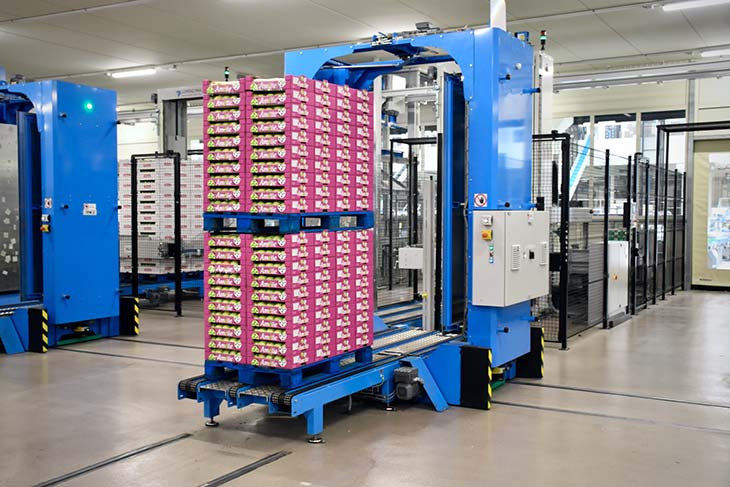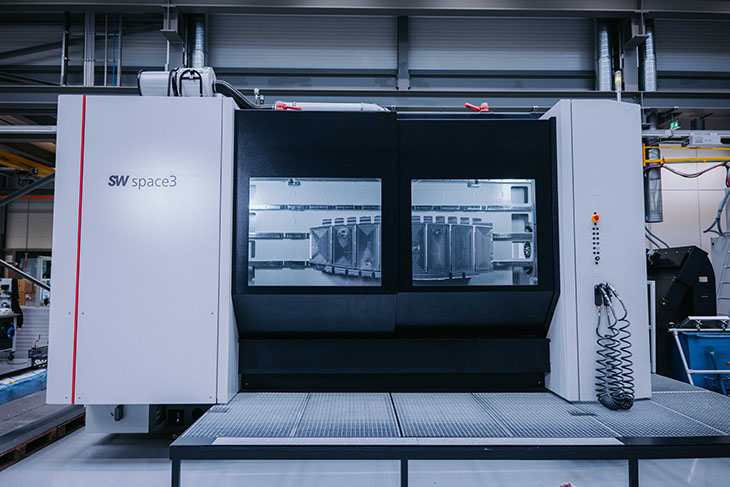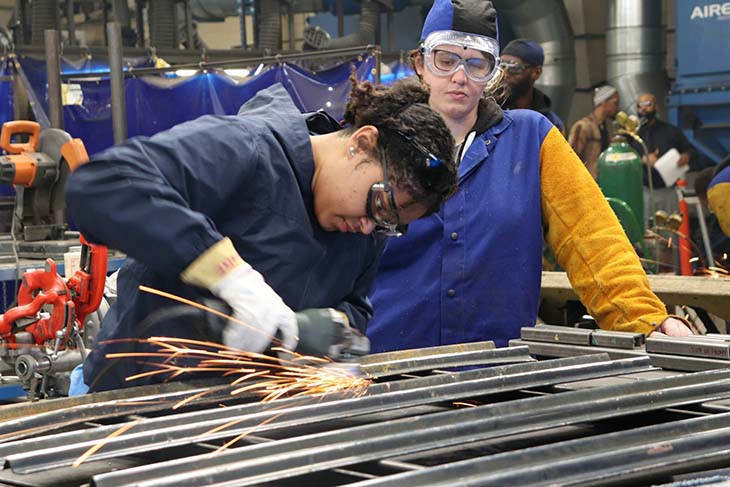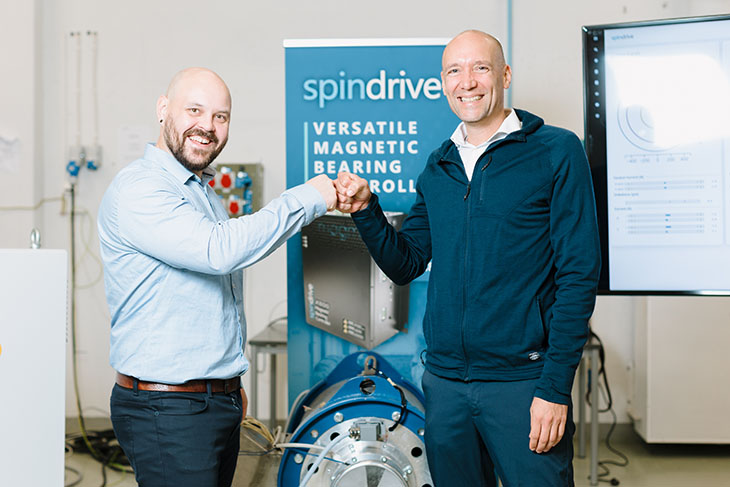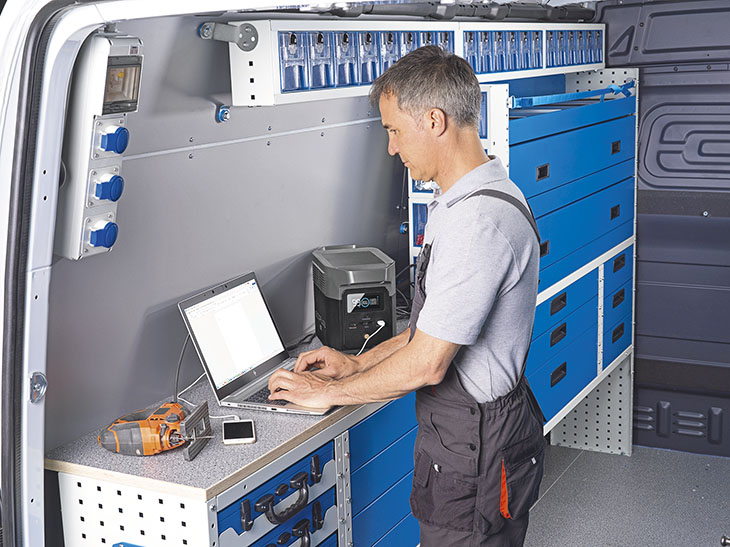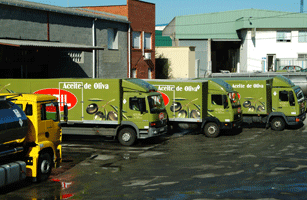2021 and 2022 continued long-running trends across manufacturing and warehousing. Managers and general warehouse laborers are in such high demand that employers must raise their offered salaries to close their hiring gaps. Additionally, historically high demand for warehouse space could mean very few vacancies and pricy real estate for years to come, according to experts.
Doing more with less in warehousing and logistics is a critical necessity and robotic palletizing solutions have a role to play in realizing that goal. Here is what you need to know.
What Are the Benefits of Robotic Palletizing Solutions?
Technology decision-makers must define their mission before recommending a robotics investment. Each reason for adopting robotics is unique to the organization and so are the derived benefits. Even so, there are several general advantages you can expect from robotic palletizing solutions, including:
- More consistent uptime: Labor shortages and public health crises mean personnel numbers and uptime may be difficult to guarantee. Automating end-of-line tasks like palletizing gives you constant uptime you can count on in one area, letting you reshuffle human talent efficiently and flexibly.
- Improved safety: Palletizing products is a challenging task. Additionally, the repetitive motions and potential hazards from the products or pallets themselves — splinters, drops, collapses — make it potentially unsafe. Robotic palletizing takes flesh and bone out of harm’s way.
- Cost savings: Fewer injuries and greater throughput per shift are just some cost savings. Others include reduced rates of damage to products and fewer mistakes and rework. Palletizing robots and cobots are also quick to reconfigure for different tasks compared to re-training employees.
Organizations face different competitive, labor pool and operational challenges, so your mileage with robotic palletizing will vary. But if you want to get the most out of your investments, what is worth knowing? Here is how to successfully add robotic palletizing solutions to your current workflows.
1. Identify Areas of Limited Mobility
Working with pallets and palletized products can be hazardous if personnel do not know how to take reasonable precautions or have not mastered stacking and shrink-wrapping techniques. The risks multiply in enclosed spaces where mobility and maneuverability are limited.
One way to add robotic palletizing solutions successfully is to identify areas where the environment limits job success or safety. This is the concept behind machines like the 72AN from A-B-C Packaging, which requires 30% less floor space than conventional palletizing processes.
2. Seek Opportunities to Combine Tasks
This is another way to tackle limited production space while enjoying additional cost-saving consolidation of industrial tasks. Some robotic palletizing solutions perform two jobs with a single machine, like erecting case packs for products on pallets or adding slip sheets and shipment labels after shrink-wrapping. Such assets could handily perform the work of several employees and do so without error each time.
3. Support Rather Than Replace Humans
Many employers want to know how to support rather than replace human workers. Maybe they have yet to experience severe labor shortages or are simply concerned with widespread automation’s ethics.
Companies like Québec’s Robotiq provide solutions for organizations with such concerns. Human “copilots” help cobots learn about product dimensions and packaging or placement requirements. Then, the automated system carries out their instructions identically with each shipment. It is an efficiency-boosting middle ground between entirely manual and 100% automated palletizing.
4. Use Robotics to Uphold Safety Standards
Employee safety is a crucial reason to adopt robotic palletizers and similar solutions. Product safety is another top-tier concern readily addressable by robotic process automation.
Safety regulations in food, beverage and pharmaceutical manufacturing are strict and are bound to stay that way. This is why several robotic palletizing solutions providers emphasize environmental and hygiene innovations in their products.
Ohio’s Yaskawa Motoman is one of a few robotic palletizer companies offering IP67 ratings for their hardware for better contamination protection and resilience in food-and-beverage manufacturing environments. Such equipment also features food-grade lubrication to enhance product safety further and ensure ongoing compliance.
5. Work on General Optimization First
Robotic palletizing solutions will not be much help if your warehouse, manufacturing plant or distribution hub is already in disarray or not functioning harmoniously. The robotics products you see on the market may bring order to the palletizing process with straightforward input/output and a repeatable process. Still, the rest of the warehouse should mirror the orderliness you are attempting to bring to your palletizing department.
Here are some reminders of the fundamentals of intelligent warehouse optimization and how they might be affected by robotics:
- Create logical and ordered storage areas and traffic patterns within the facility.
- Ensure all usable inventory and assets are labeled and stored in dedicated areas.
- Think through how new equipment additions will require reorganization or re-optimization of existing processes, personnel and essential items.
- Use a comprehensive warehouse management system to keep various departments in sync, deliver maintenance tickets automatically and maintain first-in/first-out orderliness.
Something as simple as the design of your racks and shelves could still slow you down, no matter how many robots you bring online. Make sure to button up your fundamentals before moving on to higher-tech solutions.
Think About the Future
Finally, a quick word about future-proofing — there is no such thing in technology. Robotic palletizing solutions will not last forever, but you can commit your budget to technology you believe will still serve you in the future. Robotic palletizing equipment should support your future growth through reasonable maintenance requirements and a flexible and adaptable design that will not box you in as your needs change.
Today, you might only need palletizing solutions with gripper arms. In the future, you might have items that respond better to vacuum-based grabbing power. Will you need an entirely new machine if that day comes? Do your homework and think about your future growth and likely needs if you want the most success from this endeavor.









